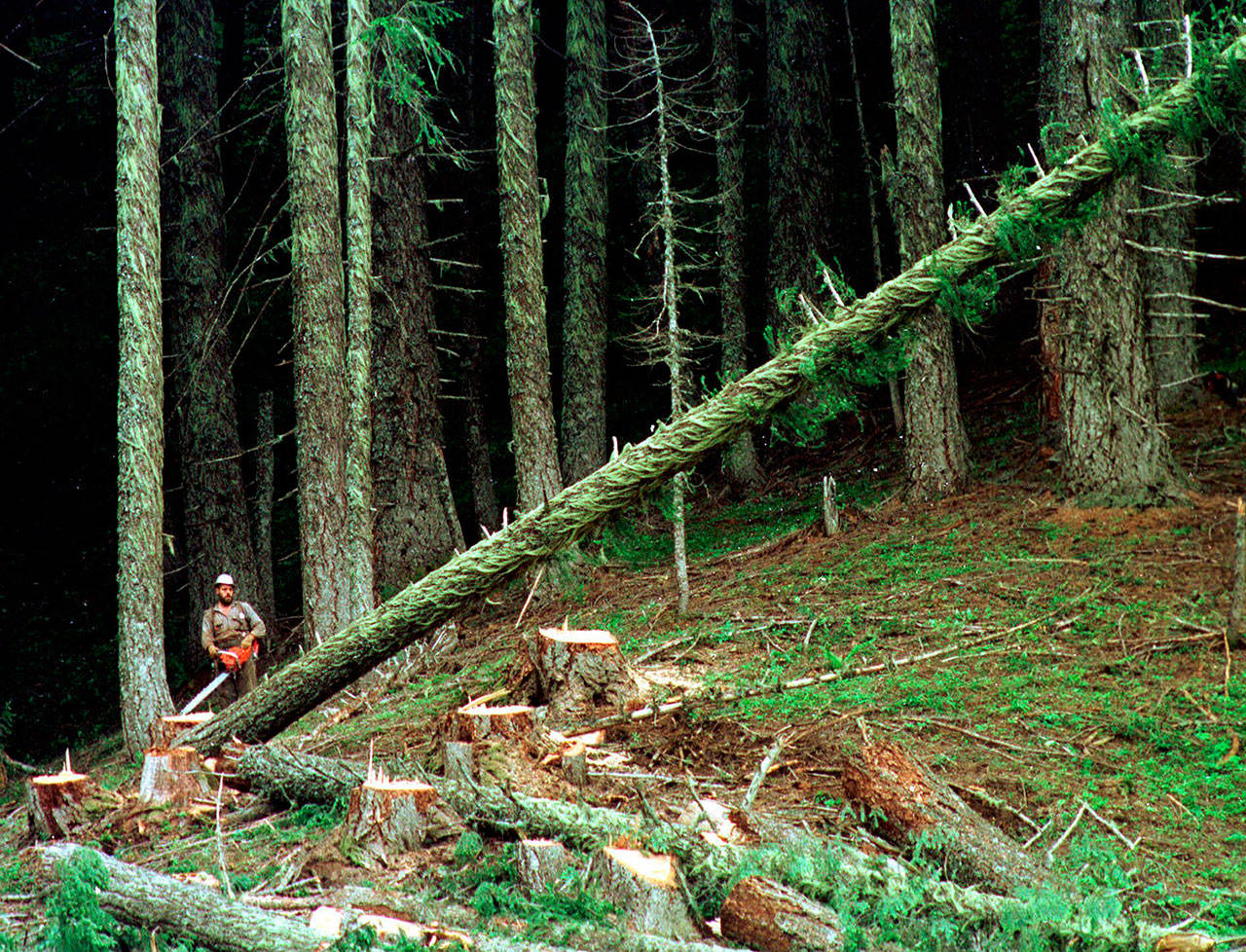By Andrew Selsky
The Associated Press
SALEM, Ore. — Environmental groups and timber companies in Oregon, which have clashed for decades, have unveiled a road map for overhauling forest practice regulations, a step that Gov. Kate Brown called “historic.”
The agreement came after the two sides quietly held meetings, facilitated by the governor’s office, in Salem and Portland over the last month to try to find common ground, instead of filing competing initiative petitions and lawsuits.
“I walked in on the first meeting, and I knew folks were serious when the timber industry folks had their shirt sleeves rolled up and enviros were in suits and ties,” Brown said at a news conference earlier this month.
The meetings resulted in leaders of around a dozen environmental groups, including Oregon Wild, the Audubon Society of Portland and Cascadia Wildlands, and of a dozen timber companies, including Weyerhaeuser, one of the largest forest products companies in the world, and Lone Rock of Roseburg, Ore., signing a memorandum of understanding.
The memorandum they agreed to sets up a process for overhauling the Oregon Forest Practices Act — a set of laws enacted in 1971 that made Oregon the first state to implement a comprehensive set of laws governing forest practices. It contains provisions for activities such as how timber harvests happen on private forest lands, providing riparian buffers along rivers and streams and the replanting of trees.
Both sides agreed the plan needs to be science-based, though debate is expected on what the science says, Blosser said. The aim is to arrive at a habitat conservation plan, or HCP — basically a certification from federal agencies that says the plan is consistent with the Endangered Species Act and the Clean Water Act and is good for both species recovery while allowing maximum timber harvests agreed to in the HCP, Blosser said.
The memorandum calls for the final plan to be developed so that legislation implementing the agreements will be enacted on or before the February 2022 Legislative session.
“This agreement proves that we can build a better future for Oregonians if we work together with a willingness to compromise,” Brown said. “Healthy forests and a vibrant forestry industry are not mutually exclusive.”
A collaborative process called Forests & Fish in Washington state led to a similar outcome, with over 60,000 stream miles and 9.3 million acres of Washington forests being protected by an HCP, according to Brown’s office.
Oregon leads the nation in wood-products manufacturing, according to industry experts, even though environmental groups and the timber industry have been backing rival initiative petitions that seek to put measures on the ballot. They have also backed rival legislation and filed lawsuits.
Under the new agreement, both sides would complete a stand-down from pursuing changes through the initiative process, related legal actions, and legislative and regulatory proceedings.
The agreement represents a departure from 20 years of tension, said Bob Van Dyk, Oregon and California policy director for the Wild Salmon Center. He appeared with Brown at the news conference.
That animosity “results in a lack of trust, gridlock on forest policy and a growing public demand for broader reform,” Van Dyk said. “Today we’re starting a new approach … It’s a path of collaboration toward stronger conservation measures and more certainty for the timber industry.”
Greg Miller, a long-time timber industry executive and representative of the coalition of forest companies, told reporters he hopes the memorandum of understanding “sets Oregon up for the most comprehensive, forward-thinking forest policy in the nation.”
Both sides underscored that while it is a big moment, it is only a first step.
“Conservation of Oregon’s forests, and communities that live around them and rely upon them, is not guaranteed at the end of this process. It will require significant work over the next two years to modernize forest rules,” said Sean Stevens, executive director of Oregon Wild.
Under the agreement, both sides would support immediate legislation to establish helicopter pesticide application buffers, or no-direct application zones, around inhabited dwellings and schools and around streams.
Nik Blosser, Brown’s chief of staff, described in a telephone interview how the two sides came together. The seed was planted when a group of timber company CEOs met with Brown in January and asked her if she could broker a deal on all the litigation and initiative petitions.
Blosser then contacted the environmentalists, thinking that this was a long-shot effort.
“I called them and said, ‘Are you interested in sitting down and having this conversation?’ And they said, ‘Well, we’re not sure how serious they really are.’ And I said, ‘Well, I think they’re pretty serious, so why don’t we do one meeting and give it a try?’ ” Blosser recalled.
There wound up being four meetings, with five people representing each side, Blosser said. Everyone was fully engaged.
“Nobody looked at their phones, which is kind of remarkable in a meeting nowadays. Everyone was listening and everyone was acknowledging the other person talking and that what they said was sincere,” Blosser said.

